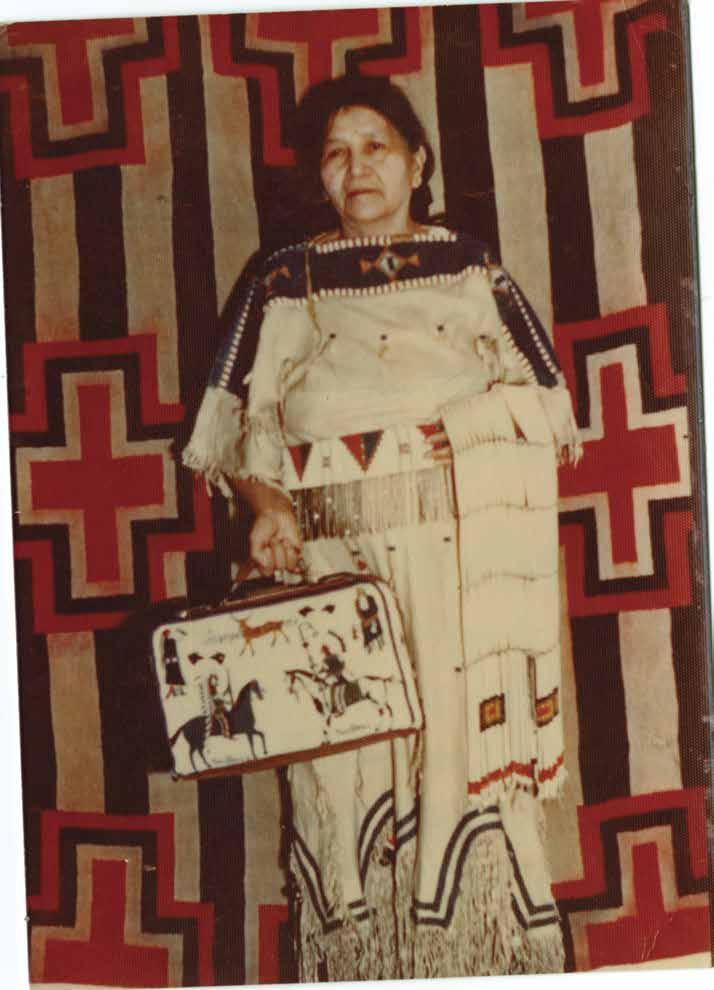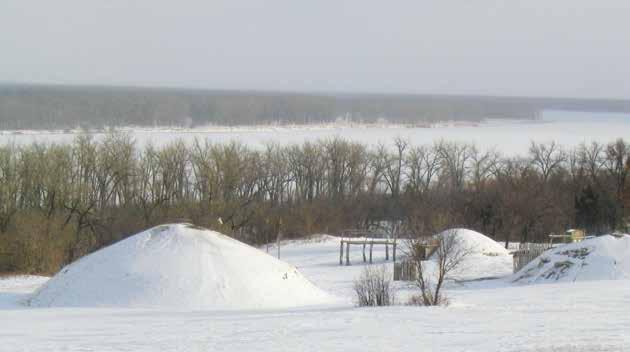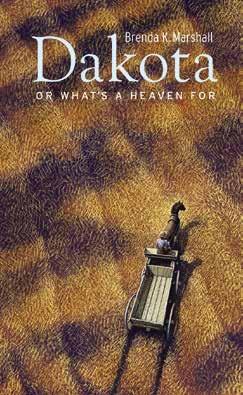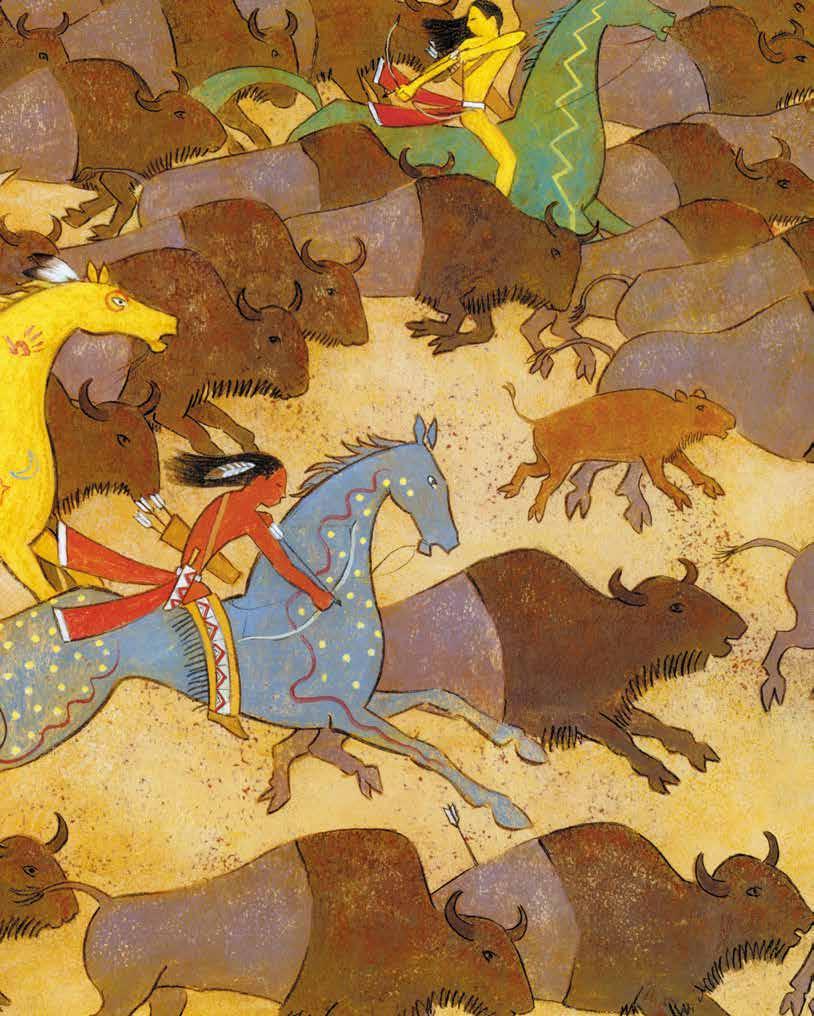
12 minute read
Whitestone Hill
Two Bear (Mahto Nunpa). chief of the Yaktonai Dakota, 1860’s.
By Clair Jacobson
Advertisement
It is “the bloodiest battle ever fought on North Dakota soil.” The U.S. Government
lists it among the principal battles of the Civil War. Based on casualty estimates, the Army-Indian conflict at Whitestone Hill in 1863 ranks near the top of all Plains Indian War engagements, from the 1850s to 1890. Despite this, the story of what happened at Whitestone Hill remains one of the best-kept secrets in American history.
In early September of 1863, two regiments of U.S. Cavalry troops attacked a large camp of Dakota or Sioux Indians in eastern Dakota Territory. The frontier site was called Whitestone Hill, and by the time the soldiers departed, they had destroyed hundreds of tipis, burned several hundred thousand pounds of dried buffalo meat, and killed or wounded an estimated 150 to 200 Indians.
Why has such a significant conflict remained so obscure? The answers lie in the timing, the location, and the absence of a permanent local population to record and remember the event. The clash occurred just two months after the Battle of Gettysburg, the deadliest and most famous battle of the Civil War. Gettysburg and its aftermath dominated the headlines. In addition, the Whitestone Hill conflict occurred on the western frontier, hundreds of miles from the nearest population centers. By the time an account appeared in Harper’s Weekly on October 31, 1863, the story was already old news about a distant event.
Unlike other Civil War-era sites in the eastern and southern United States, Whitestone Hill seemed to disappear after 1863. It was not until 1883 that the site was rediscovered by local settlers who were homesteading in eastern Dakota Territory. More than twenty additional years passed before Whitestone Hill was designated an official North Dakota historic site.
The Whitestone Hill attack became a turning point in the history of the Yanktonai Dakota Indians, just as the Gettysburg battle was the pivotal point in the Civil War. After Whitestone Hill, the Yanktonais would no longer travel freely over their traditional homelands in eastern Dakota Territory. In just five years, following an 1868 treaty with the U.S. Government, a large number of Yanktonais were settled on what became the Standing Rock Reservation on the west side of the Missouri River. Others made their homes on reservations at Crow Creek in present-day South Dakota, Devils Lake in North Dakota, and distant Fort Peck in Montana.
The roots of the Whitestone Hill engagement can be traced to the Great Sioux Uprising in Minnesota in 1862. This explosion by the Santee or eastern Dakota tribes claimed the lives of perhaps 500 settlers and sent as many as 40,000 more fleeing from their homes.
Despite the fact that the United States was already locked in a bitter struggle, pitting northern states against southern, the federal government in Washington, D.C., decided to send troops into Dakota Territory during the summer of 1863. These soldiers were to find and punish hostile Santee Dakotas who had fled from Minnesota the previous fall, and to also attack other Indians on the frontier who had decided to join the hostiles. The soldiers were entering the homeland of the Yanktonai Dakotas, Indians who had lived in the region since the arrival of horses on the northern Great Plains, probably around 1750.
Many Yanktonai leaders—including Waneta (The Charger), Two Bear, Black Catfish, Bone Necklace, Little Soldier, and Big Head—are not as well known as some of their western kin, warriors like Red Cloud, Crazy Horse, and Sitting Bull. But the Yanktonais shared a common culture, language, and kinship with these Dakota or Sioux relatives.
They lived in buffalo hide tipis, gathered chokecherries and tipsin (a prairie turnip), hunted the vast herds of buffalo roaming the northern plains, and used horses and dogs to move their villages with relative ease. Numerous bands of Yanktonais gathered each year for the late summer buffalo hunt, preserving the meat for winter by drying it in the sun. Whitestone Hill was the scene of one of those hunting camps.
When the United States Army prepared to send troops into Dakota Territory in 1863, the task fell to recently recruited soldiers from the state of Iowa and Nebraska Territory. These men did not expect to be sent to the Dakota frontier when they joined the Army.
The Sixth Iowa Cavalry regiment had been recruited to fight Confederate soldiers in the Civil War. These troops anticipated orders that would take them to battlefields in the South and East. The men in the Second Nebraska Cavalry regiment enlisted to form a home guard for Nebraska Territory, providing protection for their homes and settlements. They intended to counter potential Indian attacks if the violence in Minnesota spread farther west and south.
The U.S. War Department soon made other plans, however. Both regiments received orders to report to a staging area near Sioux City, Iowa. They would be following the Missouri River into Dakota Territory.
The soldiers harbored no illusions about the situation. They were going to war. They expected to find Little Crow, the principal leader of the Minnesota Uprising, and his followers. Their orders, issued by the commanding general, were to demand the surrender of any Indians encountered, and if the Indians refused, to attack.
General Alfred Sully had been sent west to lead the expedition. He had commanded troops at several eastern battlefields, including Fredericksburg, Chancellorsville, and Antietam. Sully had fought in some of the bloodiest engagements of the Civil War in the East. He didn’t intend to fail on the frontier.
After months of marching and camping in the dry Dakota terrain, Sully’s army did find Indians. A scouting party of 300 Iowa soldiers discovered the encampment at Whitestone Hill on September 3, 1863. Situated in a range of low hills, it was a hunting camp of numerous bands gathered for the late summer buffalo hunt. They were primarily Yanktonai Dakotas.
Initially expecting about twenty lodges, the scouting party was shocked to discover that the huge encampment contained from 400 to 600 tipis, with perhaps 3,500 Indians. In the uneven terrain, they could
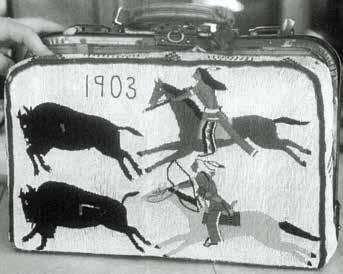
Beaded satchel made by Josephine Gates Kelly’s mother as
a graduation present.
only guess at the number of lodges. Messengers were dispatched to inform General Sully and the main command. It was mid-afternoon.
As the Iowa scouting party waited in the hot sun, a delegation of Dakota chiefs approached to ask why the soldiers had come. No doubt aware of what had happened in Minnesota the previous fall, the chiefs tried to negotiate with the soldiers through an interpreter. The talks stalemated when the leader of the scouting party demanded that all of the Indians surrender. Not understanding the Dakota culture, where no single chief or even a group of chiefs could speak for the entire encampment, the cavalry officer had demanded the impossible. The talks ended in failure.
When the main body of soldiers with Sully’s expedition received word in the late afternoon that their scouts had found Indians, the men quickly saddled their horses, gathered their weapons, and set out for the encampment ten miles away.
The Dakotas at Whitestone Hill saw the clouds of dust stirred up by the approaching army when the soldiers were still a mile away. With the sun descending in the west, many Dakotas decided to abandon their villages. The hard-charging cavalry turned the once peaceful encampment into turmoil as the Indians quickly gathered what possessions they could and departed, scattering over the hills and through the ravines. Warriors and women, children and the elderly, horses and dogs, all hurried in a desperate attempt to get away from the rapidly approaching cavalry. Some of the soldiers passed around the encampment to the south while others did likewise on the north side. Their orders were to cut off the departure of as many Indians as possible. It was a fluke of war that the different cavalry commands—maneuvering independently, out of sight of each other, and with no means of communication— managed to overtake hundreds of fleeing Dakotas and drive them into a single ravine from different directions.
While the majority of his command pushed ahead to cut off the Indians’ retreat, General Sully led the remainder of his troops into the largely abandoned villages. There he accepted the surrender of two Dakota bands that had chosen not to flee. No shots had yet been fired. Several hundred Dakotas were trapped in the ravine, with the Nebraska soldiers moving into position on the south and Iowa troops approaching from the north. The commander of the Nebraska regiment concluded that with the sun descending rapidly, the Indians would soon escape under the cover of darkness.
He ordered his men to open fire with their rifled muskets. The noise and chaos that followed—the crack of rifle shots, clouds of smoke, screams of the wounded, panicking horses, and the acrid smell of gunpowder— enveloped the ravine for about a half-hour.
When the horses of the Iowa soldiers became unmanageable as darkness set in, the Indians streamed out through an opening in the soldiers’ line, carrying many of the dead and wounded with them. The engagement had been brief but brutal.
The next day orders were given to burn the abandoned tipis and other Indian possessions. For two days the destruction continued. Dried buffalo meat, an estimated 400,000 to 500,000 pounds from perhaps 1,000 slaughtered buffalo, was piled onto the fires. Metal objects that would not burn—knives, hide scrapers, muskets, and lance points—were either thrown into the nearby lake or driven into the ground.
When the army left Whitestone Hill on September 6, their officers estimated that between 150 and 200 Indians had been killed or wounded. They would never know for sure because the Dakotas had taken many of the casualties with them as they departed in darkness. The soldiers had made certain, however, that the villages left behind had been destroyed. Twenty soldiers died from the fighting and 38 were wounded.
In an ironic twist to the history of the Whitestone Hill site, the skeletons of soldiers who died there, and which were found scattered on the ground twenty years later, had disappeared by 1889. When residents of the nearby town of Ellendale decided to rebury them in the local cemetery, they were gone. A newspaper article explained what had happened.
“It seems that the thrifty Russians of that neighborhood gathered up these bones with the buffalo bones that were strewed over the prairie and sold them to the bone dealers, who have shipped them east to make sugar.”
Although Whitestone Hill remains little known nationwide, the importance of the site has not been lost on people living in the surrounding area. For more than 100 years, interested individuals and local groups have promoted interest in the site and sponsored educational events about this conflict on the Dakota frontier.
In 1914, five thousand people attended a ceremony there, including three Dakota Indians who had been at Whitestone Hill 41 years earlier: Red Bow, He-Takes-His Shield, and Holy Horse. In 1942, a plaque was dedicated to honor the Indians who died during the fighting at Whitestone Hill, with descendants of the Two Bear family present to represent the Dakotas.
A two-day centennial celebration held at the site in 1963 included parades, Indian dancing, a memorial service for both soldiers and Indians killed in the conflict, and a rodeo, with an estimated 20,000 people converging for the Sunday events. In 1976, the year of the nation’s bicentennial, area residents staged an elaborate outdoor pageant based on the Whitestone Hill conflict.
The current Whitestone Hill Battlefield Historical Society, organized in 1986, continues to sponsor events at the site. An educational day for area elementary school children draws from 250 to 300 students each year, with presentations about the Dakota Indian culture and the conflict more than 140 years ago.
Today the pastures around Whitestone Hill are still carpeted with the virgin prairie sod that covered the rolling terrain in 1863. But now the landscape is dotted with cattle where buffalo grazed seven score and seven years ago. Abraham Lincoln’s words at Gettysburg would also prove appropriate for the Whitestone Hill conflict: “The world will little note, nor long remember, what we say here, but it can never forget what they did here.”
Clair Jacobson visited the Whitestone Hill Battlefield as a boy and has researched and written about the conflict and the people involved for more than thirty years. A former U.S. Marine, he has a master’s degree in history and has published three books related to the history of the Dakotas, the most recent being The UnCivil War at Whitestone Hill.
BECAUSE DEMOCRACY DEMANDS THOUGHTFUL AND INFORMED CITIZENS. The North Dakota Humanities Council is an independent state affiliate of the National Endowment for the Humanities, founded by the federal government on the premise that, “An advanced civilization must not limit its efforts to science and technology alone, but must give full value and support to the other great branches of scholarly and cultural activity in order to achieve a better understanding of the past, a better analysis of the present and a better view of the future.” Simply put, a nation that does not know why it exists, or what it stands for, cannot long be expected to flourish. In this vein, the NDHC uses the tools of history, literature, philosophy, ethics, and archeology to understand and enhance American culture.
RECENT DONORS
PACESETTER $500 - $999 Ellen Feldman & Ronald Brockman Bob & Susan Wefald
PATRON $250 - $499 Verna Aleshire Brenna Daugherty Carole L. Kline Sheila Schafer
FOUNDER $100 - $249 Steve & Barbara Andrist Jay Basquiat John & Marla Beineke Tami Carmichael in Honor of Kara Geiger and Michael Shireck Kenneth J. Glass Patricia Grantier Kate Haugen Joseph Jastrzembski Edward and Vivian Mashek James Nickson Mabel Olson Katherine & Joe Satrom Sarah Smith Warren & Jacob Warren Constance Triplett Tom Tupa
ASSOCIATE $50 - $99 Mark Bernstein Carol Christianson Kara Geiger Margine & F.D. Holland, Jr. David Olson Jim & Mary Olson Amy Phillips Mildred Rothgarn Arne & Gayle Selbyg
CONTRIBUTOR $49 AND BELOW Jacob Aisenbrey Jonathon Aisenbrey Enid Bachman C. Owen Carlson Charles Carvell Luanna Fisketjon Bruce Hagen Alma Helm George Herman Patricia Hinkle Carl Job Ryan Kopseng Howard Langemo Eileen McMullen C. Ray Penn Denis Register Father William Sherman Jeannie Steinwand Marvyl Strassberg Dale & Julie Thompson Sarah Vogel


